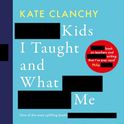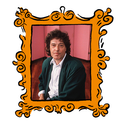To hear some of the responses to the Tate Modern’s Yoko Ono: Music of the Mind retrospective, and to read some of the reviews, you would think that Ono had fallen short of cherished career goals to be a virtuosic musician and a highly skilled draughtsman. But Ono’s art has never been concerned with displays of technique. Concept is king, and her work flourishes in the minds of people who choose to take it seriously.
An exhibition of Ono artefacts—pushed behind glass cases, with objets d’art arranged on pedestals and hung in the way that the Tate might show Picasso or Philip Guston—in a way feels antithetical to everything she has always represented. Ono herself demonstrated as much when, in 1971, her self-appointed “debut” at the Museum of Modern Art in New York involved taking advertisements in the Village Voice claiming she would be releasing swarms of flies soaked in perfume into the gallery space. There were no flies, there was no exhibition; MoMA was unaware that Ono had co-opted its brand. As Music of the Mind documents, people interviewed at the time on the street outside were, even if just for a second, invited to consider what would have happened had Ono indeed let flies loose inside that hallowed artistic space, a fantasy that transported them out of the everyday.
The difficulty with any Ono retrospective today is that we’re just too knowing. We know that she married a Beatle and everyone, apparently, takes a view on whether or not she broke up the band. Lots of people, too, feel certain—because this is what a certain sort of art aficionado wants them to think—that she was a charlatan, a hanger-on around more talented people—from John Lennon to John Cage—off whom she freeloaded shamelessly. I wish this exhibition had been mounted a few years ago, when Ono, now 91 and in poor health, had been able to bring her shamanistic magic to the party. In 2013, when she helmed the Meltdown Festival on London’s Southbank, I saw her powers on full display, and nobody should doubt her ability to channel the energy in a room; to catch people under her spell and make them contemplate truths beyond their everyday perspective of the world.
But that great weakness of this show—Ono’s absence—also turns out, curiously and unexpectedly, to be a blessing. Without her Svengali-like presence, it becomes possible to take an objective tour through her work, tracing how her obsessions recur in multiple guises.
Lennon makes his first appearance in the third room, meaning there’s plenty of scope to assess Ono’s work before she fell into the orbit of the world’s most successful rock band, later becoming the world’s most public widow—and for the most devastating of reasons. Her fixation on the sky as a metaphor for peace and freedom and the unknown becomes more meaningful than any wishy-washy cliché about “blue-sky thinking” when the realisation dawns that, during the Second World War, she often looked up at the Tokyo skies in terror: bombing raids destroyed everything she loved, then Hiroshima and Nagasaki happened.
The notion that later she existed as a footnote to Lennon is also necessarily—and correctly—kicked into touch. When, in 1961, Ono opened her famous loft space at 112 Chambers Street in downtown Manhattan, she was married to Toshi Ichiyanagi, a Japanese composer with Dadaist leanings and a student of Cage. She brought no celebrity. And anybody coming to her loft space to witness pieces involving, perhaps, glacially evolving drones or the spectacle of musicians sprinting at the wall was engaged, with her, in testing the boundaries of what art might mean.
The notion that she existed as a footnote to Lennon is necessarily—and correctly—kicked into touch
While watching footage of the famous Bed-ins for Peace, her 1969 protest against the Vietnam War, you sense Ono playing a cannier game. With Lennon at her side, she is articulate and persuasive, while John’s rockstar ego leads him to imagine that his platitudes carry weight. Using Lennon’s stardom to carry her message, she is top cat and knows it.
Other ephemera of the era, such as the film of her 1964 Cut Piece—which shows her sitting motionless onstage as her clothes are gradually snipped off with scissors, an essay in taking artistic purity to its naked essence—might suggest that an exhibition of ideas isn’t easy to pull off.
But I nevertheless emerged from the Tate Modern with a clear sense that postmodern knowing and cynicism—fun and necessary as it sometimes is—is easy. Taking ideas and concepts seriously, though, is what can really change hearts and minds about the world.












